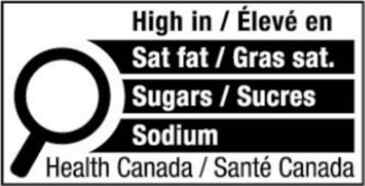
2023 Year in Review: Advertising, Marketing and Regulatory Law

In review, 2023 emerged as a notable year in comparative advertising law, and a year prompting unease among businesses operating in Quebec as they grappled with understanding and complying with Quebec’s new language laws under Bill 96. Several new or updated guidelines from the Federal Trade Commission (FTC), Ad Standards and Health Canada governing influencer or endorsement marketing and food advertising, were also issued during the year. We explore some of these developments below.
Federal Court Weighs In on Comparative Advertising Claims Again
Last year, the Federal Court issued its highly anticipated decision on the use of comparative advertising in Canada in Energizer Brands, LLC v. Gillette Company, 2023 FC 804. The Court considered whether Duracell’s use of comparative performance claims on stickers and labels of DURACELL battery packs such as “15% LONGER LASTING vs. Energizer”, “Up To 20% LONGER LASTING vs. the bunny brand” and “Up to 15% longer lasting vs. the next leading competitive brand” depreciated the goodwill of Energizer Brands’ ENERGIZER marks and whether these claims were deemed false or misleading contrary to the Competition Act.
The most prominent federal decision that considered the use of a competitor’s trademark in advertising and labels was in 1968. The Exchequer Court of Canada in Clairol International Corp et al v Thomas Supply & Equipment Co Ltd et al (1968), 55 CPR 176 (Can Ex Ct) established that diminishing the esteem of a registered trademark can harm its goodwill by luring away customers who might otherwise buy the trademark owner’s products if not for a third-party statement referencing the trademark. The Clairol decision had been widely regarded as controversial as some commentators argue that expanding on trademark rights to restrict comparative advertising could interfere with freedom of expression and competition[1]. Nonetheless, the Court in Energizer followed Clairol, and found that the “purpose of putting the Energizer Trademarks on the packaging was to promote the sale of DURACELL batteries by suggesting to consumers that they would get a better result using Duracell’s batteries in the hope of getting a part of the market enjoyed by Energizer”. Justice Fuhrer stated that this was a clear example of Gillette’s trademarks being “bandied” about, resulting in lost control and loss of distinctiveness. After discussing each element of section 22 of the Trademarks Act for the depreciation of goodwill as set out in Veuve Clicquot Ponsardin v Boutiques Cliquot Ltée, 2006 SCC 23 , Justice Fuhrer found that the use of ENERGIZER and ENERGIZER MAX by Duracell depreciated the goodwill of Energizer’s registered trademarks. Other claims referring to “bunny brand” or “the next leading competitive brand” however were not. The Court noted that there was insufficient evidence to find a requisite link to support a section 22 claim.
Justice Fuhrer also declined to find that any of the comparative claims were false or misleading under the Competition Act. Duracell’s performance claims accompanied by disclaimers such as “up to 15%,” were not materially deceptive. The absence of evidence indicating increased Duracell sales due to the stickers alone further supported this finding.
Ultimately, Justice Fuhrer’s ruling favoured Energizer, who issued an injunction prohibiting the use of Energizer’s marks on packaging and awarded damages of $179,000.
The Energizer decision serves as a reminder for marketers to tread carefully when considering the use of a competitor’s trademark in advertising campaigns in Canada. Not only do marketers face the risk of being challenged for false or misleading comparative claims, but they could also be held liable for damages and an injunction for violations of the Trademarks Act.
Developments in Advertising and Marketing in Quebec
Commercial Advertising in Quebec
Enacted on June 1, 2022, Bill 96 brought sweeping changes to the Charter of the French language as a result of the Quebec government’s effort to affirm French as the only official language of Quebec. The bill strengthens provisions relating to the use of French as the language of commerce and business, and more particularly, brings stricter requirements for the use of non-French trademarks on signs, posters and product inscriptions.
As initially drafted, several provisions of Bill 96 raised more questions than they answered for businesses seeking to comply with the new French language laws. Throughout the latter half of 2023, businesses anxiously awaited the publication of draft regulations, hoping for greater clarity.
On January 10, 2024, the Quebec government released draft regulations to amend the existing Regulation respecting the Language of Commerce and Business. Key highlights of the draft regulations include:
- Clarifications on the use of non-French trademarks on products. It softens the requirement for registering non-French trademarks on products to include pending trademark applications and clarifies that the term “product” as referred to in the new provision of Bill 96 includes its container, wrapping, and accompanying documents, clearing up previous ambiguities.
- Requirements for French translation of generic or descriptive terms within non-French trademarks. These terms in another language than French must not be more prominent than their French counterparts. Definitions for “descriptive” and “generic” terms are provided (though they are very broad), although some uncertainties such as the definition of a “medium permanently attached to the product” remain.
- Extended phase-out until June 1, 2027 for non-compliant products. Businesses have additional time to achieve compliance provided that the products were manufactured no later than June 1, 2025. Also, a French version of the trademark appearing on product packaging or labels must not have been registered.
- Websites and social media platforms are considered “commercial documents”. These online publications cannot be made available in another language unless the French version is available under the same or better conditions.
- French must be markedly predominant on signage on the exterior of buildings where a non-French mark appears. The draft Regulation replaces the “sufficient presence of French” requirement that came into force in 2016 for store-front signage. French text on public signage must now be at least twice as large and as visible as the non-French text, including the trademark.
The draft regulation provides clarity and additional guidance but some uncertainties and areas for further clarification remain. Stakeholders have the opportunity to comment on the draft by February 24, 2024. See our full article on the draft Regulations to Bill 96 here.
Amendments to Quebec’s Contest Laws
In October 2023, Quebec made important changes to the rules governing contests in the province, repealing the contest-related provisions in the Act respecting lotteries, publicity contests, and amusement machines and completely abolishing the Rules respecting publicity contests made under the Act. These provisions and rules imposed strict requirements on businesses and sponsors running publicity contests in Quebec, resulting in many such contests excluding Quebec altogether. Some of the requirements that no longer apply include the obligation to register all contests with the Régie des alcools, des courses et des jeux prior to their launch, the obligation to furnish security for winnings in certain cases, and obligations related to contest rules and any changes thereto. Failure to comply with these types of requirements exposed businesses and sponsors to the risk of serious fines and criminal charges.
While the above changes will likely lead to the more frequent inclusion of Quebec in publicity contests, sweepstakes, giveaways, and similar promotions, businesses and sponsors should remember that any contest extending to Quebec must still comply with the Quebec Charter of the French Language, meaning that the contest rules, and all commercial advertising in relation to the contest, must be available in French.
Competition Bureau Updates
During the past year, the Competition Bureau (“Bureau”) continued its crackdown on deceptive marketing and advertising practices in Canada. While greenwashing claims continue to be an area of focus for the Bureau, the Bureau recognizes the need to keep up with changes in the digital economy and protect consumers from online deceptive marketing practices. Dark patterns for example (defined by the Office of Consumer Affairs as “a type of web or app design that can be used to influence your decision making when you are using an app or navigating through a website”) have become a top priority for the Bureau. In 2023, the Bureau investigated and/or reached agreements with several companies allegedly engaged in deceptive online advertisements of sales and markdowns, the use of scarcity claims (i.e., that a product is only available for a limited time), astroturfing (i.e. online fake reviews) and the use of drip pricing. We have summarized a few of these cases below.
Sales, Markdowns, and Scarcity Claims: Everything (Misleading) Must Go
The Competition Bureau’s investigation into the Dufresne Group and its affiliates (the “TDG Companies”) addressed allegations that these companies grossly exaggerated the ordinary prices of certain furniture products and appliances that were listed as being on sale on their websites, in-store and via various advertising channels. This type of behaviour contravenes the Competition Act, which requires businesses to be able to validate the regular price of an item when advertising the sale price. Further, the Bureau found that the TDG Companies made misleading use of countdown timers urging consumers to act fast even though products were still available after the timers had run out. The TDG Companies agreed to pay a $3.25 million penalty and $100,000 to cover the costs of the Bureau’s investigation.
Another investigation into a Montreal-based mobile software application developer focused on the alleged purchase of positive reviews from third parties. Amp Me is a mobile app that allows users to amplify the sound of their music by synchronizing multiple electronic devices. The Bureau viewed the positive reviews purchased by the developer as false and misleading and found that the developer misled consumers into believing that the application was free when there was only a limited free trial followed by high subscription fees. As part of the settlement, Amp Me agreed to pay $310,000 of the $1.5 million penalty imposed by the Bureau, as well as $40,000 to cover the Bureau’s costs.
Drip Pricing: An Expensive Ticket for Online Ticket Vendors
The past year saw a continuation of the upward trend in enforcement of the prohibition against drip pricing in the event ticket sales industry in Canada. The unlawful practice of drip pricing involves promoting or advertising a price that does not include fixed charges or fees that consumers must pay in addition to the price as advertised. As of 2022, the Competition Act specifically addresses drip pricing as a harmful business practice, and the Bureau has imposed millions of dollars in penalties for drip pricing over the past several years.
In reviewing complaints against TicketNetwork, an online marketplace for event tickets, the Bureau concluded that the website advertised unattainable prices and promoted tickets at unobtainable discounts. The Bureau found that TicketNetwork charged consumers mandatory fees that added an average of 38%, and, in some instances, as much as 50% to the advertised prices. Further, the business was found to have promoted prices to Canadians in American dollars and gave consumers the misleading impression that they were purchasing tickets directly and not via resale. TicketNetwork agreed to pay an $825,000 fine to settle the case.
The Bureau also filed an application with the Competition Tribunal against Cineplex, which promotes and sells movie tickets through its website and mobile app. According to the Bureau’s investigation, Cineplex adds a mandatory online booking fee of $1.50 that is not reflected in its ticket prices as advertised. The Bureau has further alleged that the practice of charging an online booking fee has generated significant revenues for Cineplex since the practice was introduced in 2022. Notably, the Bureau’s application to the Tribunal seeks not only a monetary penalty but also restitution to affected consumers who purchased tickets through Cineplex’s website or app.
Updates from FTC and Ad Standards
Influencer Marketing
With consumers increasingly turning towards digital channels for brand discovery, influencer marketing has grown into a significant outreach strategy for advertisers. In 2023, both the U.S. Federal Trade Commission (“FTC”) and Advertising Standards Canada (“Ad Standards”) published updated guidelines on influencer marketing to better regulate the practice and encourage influencers to maintain transparency with their audiences. The updated guidelines address the trends and features from newer social media platforms and provide extensive examples of influencer posts or ads that could be considered deceptive or misleading. Below are some notable excerpts from the FTC Endorsement Guidelines, its updated “FAQs” and Ad Standards’ Influencer Marketing Disclosure Guidelines.
FTC Endorsement Guidelines:
- Clarifies that endorsements can include fake reviews, virtual influencers and tags in social media posts.
- All endorsements must include adequate disclosures about the relationship between the endorser and the advertiser. These disclosures must be clear and conspicuous.
- Short disclosures such as “thank you”, “partner”, “#ambassador” or “gifted” by themselves may be ambiguous and confusing as they do not effectively identify the sponsor or advertiser. Disclosures such as “Thanks XYZ for the free product” or “#XYZ_Partner” are preferable.
- Disclosures within the first three lines of a post are recommended since some social media platforms automatically truncate longer posts. Disclosures of the influencer and sponsor relationship should appear without having to click the “more” button.
- Influencers located outside the United States but with a substantial U.S. audience, engaging in influencer marketing with U.S. companies or brands, may still fall under FTC regulations. If it’s reasonably foreseeable that content will be seen by and impact U.S. consumers, the FTC regulations would apply.
- Certain activities such as reviews that could distort or otherwise misrepresent customers’ opinions or experiences with the advertiser’s product, regardless of whether the reviews are considered endorsements, are expressly prohibited.
Influencer Marketing Disclosure Guidelines:
- Guidelines and best practice tips on disclosures now provided on the type of post provided, versus posts on specific platforms.
- Affiliate marketing and refer-a-friend programs may trigger disclosure requirements where influencer is receiving a benefit. Using “#ad” may not be sufficient. #CompanyAffiliate or #CompanyPartner would be preferred.
- Disclosures about receiving gifted products or gifted experiences/events and subsequent endorsements, even if no monetary compensation is provided, should be made.
- Disclosures should be written with unambiguous language. Thanking a sponsor such as “Thank Company Name” may be not effective in communicating that influencer received a benefit.
- Disclosures should appear at the beginning of short or time-limited videos such as Instagram or Snapchat Stories, and verbally mentioned or displayed visually.
Influencers and brands, whether targeting domestic or foreign audiences, should keep in mind the guidelines set by the FTC and Ad Standards when producing content to avoid running afoul of deceptive marketing practices.
Code for the Responsible Advertising of Food and Beverage Products to Children (CCFBA) and the Guide for the Responsible Advertising of Food and Beverage Products to Children
On June 28, 2023, Ad Standards began administration of the Code for the Responsible Advertising of Food and Beverage Products to Children, a set of rules governing responsible advertising of food and beverages to children. Only food that meet specified nutrition criteria may be advertised in a manner that is primarily directed to children under the age of 13. A companion document called the Guide for the Responsible Advertising of Food and Beverage Products to Children was subsequently issued to help advertisers understand the intended scope and application of the CCFBA.
In considering whether an advertisement is primarily directed to children, Ad Standards will review (a) the nature and intended purpose of the food or beverage product advertised; (b) the manner of presenting the advertisement; and (c) the time and place the ad is shown. Ad Standards will offer preclearance services for advertisers subject to the new CCFBA and the Guide to facilitate compliance in all media and adjudicate complaints received. Links to the CCFBA and the companion guide can be found here.
Front-of-Package Food Labelling
In July 2022, the Federal Government published regulations amending the Food and Drug Regulations (“FDR”) in an effort to help Canadians make informed choices when purchasing packaged food and beverages. Certain foods high in saturated fats, sugars, and sodium now require a Front-of-Package (FOP) nutrition symbol (example shown below) that quickly informs consumers about the nutrient composition of a food product. The Regulations took force immediately, but stakeholders have until December 31, 2025 to make any needed adjustments to comply fully with the new regulations.

Health Canada is responsible for establishing the FOP labelling regulations whereas the Canadian Food Inspection Agency (CFIA) is responsible for enforcing compliance. To assist companies in adapting to the new FOP nutrition labelling requirements, Health Canada released an updated guidance document in May 2023. The document provides practical information on various aspects of the regulations, including an overview of FOP labelling, prohibitions, nutrient thresholds, exemptions, symbol presentation and specific guidance for products with assortments or voluntary claims.
[1] See CLAIROL REVISITED: TRADEMARK RIGHTS v. FREEDOM OF EXPRESSION AND COMPETITION IN CANADA by Daniel R. Bereskin, Q.C. (Trademark Reporter, Sept/October 2020).





